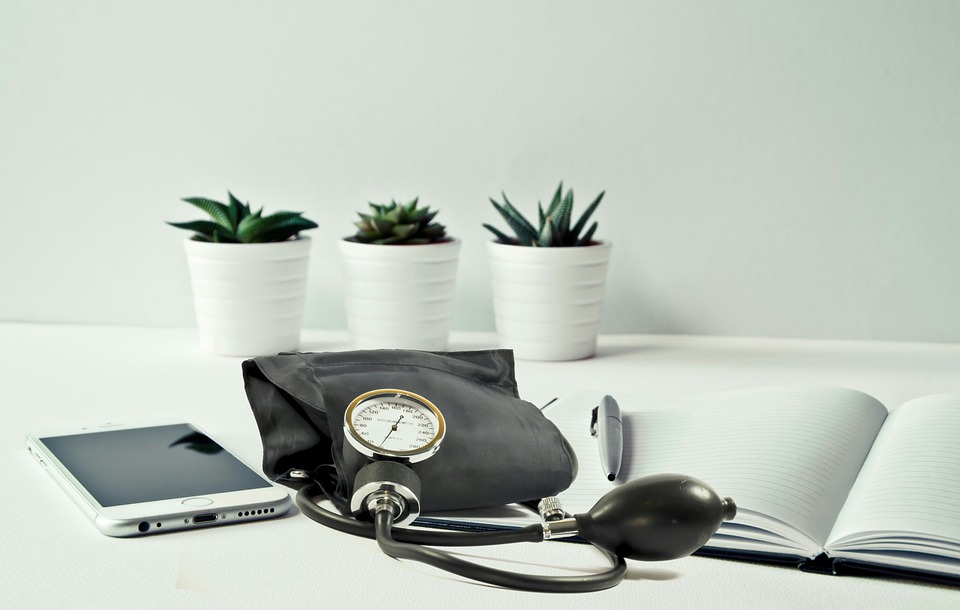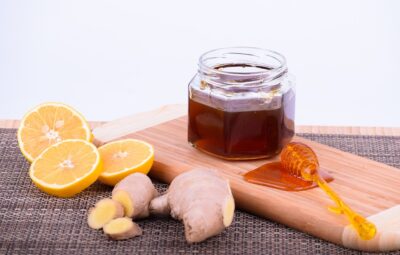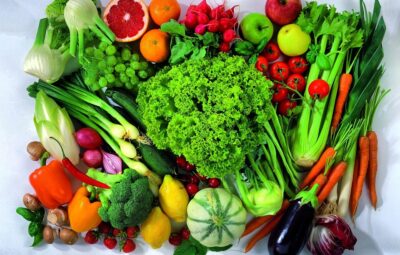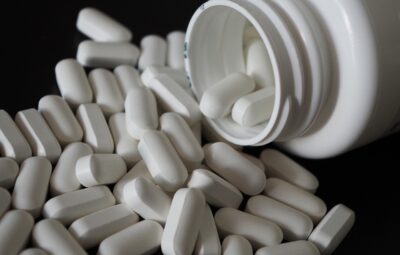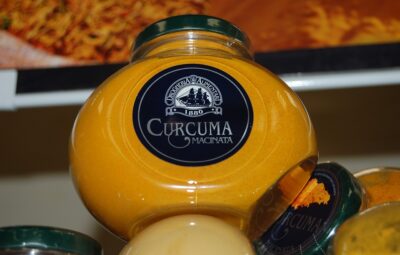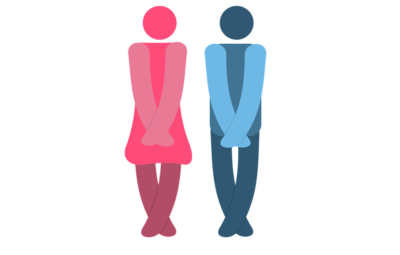The human body cannot survive without a functioning circulatory system that pumps blood. This system transports blood to every part of the body.
The heart circulates blood, which is then conveyed via arteries throughout the body.
The amount of pressure that is exerted on arteries and blood vessels by the circulation of blood is known as blood pressure. The heart must labor more strenuously to keep circulating blood through the body when high blood pressure is present. This is a widespread issue that affects numerous patients.
Neglecting to keep blood pressure within the proper range can lead to damaging results in the body. This can contribute to serious health complications.
It may also cause certain diseases to develop. Someone with uncontrolled high blood pressure has a greater chance of having a heart attack.
Examining what constitutes high blood pressure and signs a patient should be aware of. We also look into the best techniques for reducing blood pressure naturally.
What Is High Blood Pressure?
Blood pressure that is too high is a medical state where excessively greater force is used on the blood vessels to push blood throughout the body.
According to the Centers for Disease Control and Prevention, it is estimated that nearly a third of all adults in the US suffer from hypertension. It appears that older people are more vulnerable to illness. Around two-thirds of individuals over 60 years old have high blood pressure.
Hypertension is diagnosed under specific conditions. The levels of pressure on the arteries need to be monitored closely by a medical professional, as they must be sufficiently intense to cause alarm. In these circumstances, the tension could cause harm to the walls of the arteries. This can result in the emergence of certain problems for an individual.
Blood pressure is measured by two factors. The volume of blood that the heart pumps out is the first thing to consider. The obstruction of blood flow through the blood vessels will also be taken into account. Narrow arteries cause increased resistance. A heart that pushes an increased amount of blood also increases the possibility of elevated blood pressure.
The condition slowly causes damage to blood vessels. This is why hypertension is considered a severe problem. A lot of individuals do not recognize they have elevated blood pressure till problems start to arise. If one’s blood pressure is not regulated, there is a potential for them to experience numerous medical issues.
Symptoms Of High Blood Pressure
The biggest worry related to hypertension is that many sufferers do not experience any signs or symptoms. A lot of individuals will only discover that they are suffering from hypertension once the sickness affects their overall health.
There are sometimes symptoms that develop. It is not always clear that the signs and symptoms experienced are associated with high blood pressure. It is essential to be aware of the signs and symptoms associated with high blood pressure.
This can be a useful tool for figuring out if one’s blood pressure has risen. This makes it possible for someone to have their blood pressure monitored. Receiving a diagnosis quickly can often help to lower the probability of encountering certain problems.
In most cases, symptoms may include:
- Headaches
- Shortness of breath
- Nosebleeds
The symptoms associated with hypertension are not specific. Several conditions can cause these symptoms.
It is of the utmost importance that blood pressure levels are tested routinely. Particularly those in peril of having elevated blood pressure levels experience this most significantly. Age is one risk factor for high blood pressure.
People should be aware of a number of other risk factors such as eating a diet that is high in salt, being overweight, and leading a lack of physical activity.
What Are The Complications Of High Blood Pressure?
Failure to control blood pressure can lead to complications. Previously, it was stated that elevated blood pressure damages the walls of arteries. Over time, this can cause many different problems in the body.
High blood pressure is known to be a major risk factor for heart disease. Heart disease is generally considered to be the most fatal affliction in numerous parts of the globe.
Patients should be knowledgeable about more than just cardiovascular illness; other issues might also arise. Gaining knowledge of the intricacies aids someone to comprehend why it is essential to take action to maintain their blood pressure. It also provides insight into the impact the condition can have on an individual’s physical health.
Some complications that people need to be concerned about include:
- There is a significant increase in the risk of a heart attack.
- A person is also more likely to suffer a stroke when they have high blood pressure problems.
- Blood vessels in the eye can tear and become thickened. Sometimes, these blood vessels become narrower than normal. In turn, this can cause complications with a person’s vision.
- A patient is at risk of an aneurysm when they have high blood pressure. This happens due to the weakening of blood vessels. Arteries become weak due to the increased pressure placed on their walls.
- Arteries in the kidney scan also become narrow and weak. This can affect blood flow to the kidneys. In turn, the kidneys may fail to filter blood effectively. This can cause a person to suffer serious complications.
- Heart failure has also been linked to hypertension. This is a condition where the blood is not able to pump blood throughout the entire body.
- The disease often starts with the thickening of the pumping chamber in the heart. This is called left ventricular hypertrophy. Eventually, the heart’s muscle becomes weak.
- There is evidence that a connection exists between cognitive impairment and high blood pressure. A person with hypertension may find that their memory function is adversely affected. Some people also find that their ability to understand and think easily is adversely affected.
- Dementia also holds a link to high blood pressure. There is an increased risk of dementia and associated condition in patients with hypertension.
Let us examine four attainable concepts for a diet to reduce high blood pressure that will permit your blood pressure to go down without the use of medications. We’ll be taking a closer look at specific food items that can assist in decreasing one’s blood pressure, in addition to what the next steps are for achieving improved heart health.
1. Watch out for hidden salt in everyday foods.
Relaxing in a comfortable seat in a theater with a container of crunchy, savory popcorn. Snatching a warm, savory pretzel while watching a Twins baseball game on a hot summer’s night. What could be better?
Your taste buds and your body crave salt. Actually, your body necessitates a certain amount of salt in order to properly maintain vital cardiac and nerve functions. It is vital to be mindful of your consumption, as an excessive amount of salt consumption has been linked to elevated blood pressure and other heart complications.
Sodium can be present in places you would not expect. As an illustration, it is common knowledge that a great many foods such as meats, crackers, pre-packaged dinners and broths feature high salt contents. Have you heard that a considerable amount of salt is frequently included in things like pickles, steak sauce, ketchup, and mustard?
The amount of salt in many canned vegetables can come as a shock since vegetables generally have positive impacts on heart health. Peanut butter and cheese can also be unexpected offenders.
So, how much salt is too much? For the majority, it is a positive goal to limit one’s sodium intake to no more than 2,300 milligrams daily. The ideal amount is less than 1,500 mg, and anything even lower is preferable. Luckily, there are some simple, useful techniques to lessen salt consumption in your meals.
Run the numbers and go for a low-sodium option at the grocery store.
Take a look at the nutritional information of what you are buying and making – a piece of advice that still stands true today. On the nutrition label, the sodium content will be listed, along with other various facts, so it is important to check the amounts of salt when one is eating to make sure they don’t consume too much.
Do a little menu research before eating out.
Eating out or bringing home food to eat is perfectly acceptable. Even though many restaurant meals that are processed may contain an above average amount of sodium, you can still have an edible feast that’s beneficial for your wellbeing when consuming food away from home.
2. Switch out your snack of choice for something heart healthy.
Ah… the famed midnight (or morning, or afternoon) snack. One may get a fast energy boost by having a snack, allowing them to continue with tasks, complete errands, or finish up housework. It is perfectly acceptable to have a few bites between meals, but certain snacks can be detrimental to your blood pressure.
Many snacks (particularly those that have been manufactured) have substantial amounts of salt and sugar. This typically results in a temporary rise of vitality, though not much in terms of sustenance. These kinds of snacks include foods like:
- Potato chips
- Pretzels
- Crackers
- Microwaveable popcorn
- Cookies
- Donuts
- Granola bars
There are available choices for individuals opting for either a low-fat or high-protein diet, such as turkey jerky or protein bars, that appear to be nutritious. Definitely, certain items may be labeled as vegan, but you must make sure to read the labels. These foods may still contain high levels of salt or sugar.
3. Put some DASH in your lunch and dinner.
No need to fret – we don’t have to revisit the gym class experience. Running quickly is an effective means of getting in an intense physical workout, but it is also important to factor in your dietary habits as well.
DASH stands for Dietary Approaches to Stop Hypertension. This diet was crafted to aim towards foods that have the potential to bring down high blood pressure. These foods are abundant in calcium, magnesium, and potassium, but are limited in sodium and fat.
Try one of these DASH-inspired foods:
- Introduce some more fruits and vegetables into your meals, especially dark green, orange and yellow ones. Broccoli, spinach, carrots, melons, avocados, tomatoes, oranges, bananas, squash and potatoes are great ways to get started. Try to focus on whole fruits and vegetables, rather than juices or oils to get the most nutrient value.
- Substitute low-fat or fat-free dairy options for what you normally use. This includes things like milk, cheese and yogurt, where the idea is to still get the beneficial calcium without getting as much of the fat. One way could be in your daily coffee order: Ask for a “skinny” latte instead of a regular one.
- Focus on eating good fats (unsaturated fats). Try to avoid saturated fats and trans fats, and always check nutrition labels to review what kind of fats your foods contain. Also look for lean meats, oily fish, nuts and light salad dressings. Cook with olive oil, rather than solid fats like butter. Peas and beans are also great mealtime choices: these not only have good fats, but they’re good sources of potassium and magnesium.
4. Get the facts on alcohol and blood pressure.
Lots of us enjoy having an alcoholic beverage when we hang out with our buddies or families. The perfect combination of ingredients can make an already delicious meal even better, or it can help to create an upbeat atmosphere for a good time. But alcohol and blood pressure don’t always mix well.
Consuming a lot of alcohol can increase your blood pressure, which increases your chances of future coronary problems. When making the choice to consume alcoholic beverages, it is crucial to abstain from drinking too much.
How much is too much? For female individuals, it is recommended to limit alcoholic beverage consumption to one serving per day. For men, no more than two drinks per day. One standard alcoholic beverage is equivalent to a 12-ounce bottle of beer, a 5-ounce glass of wine, or a 1.5-ounce shot of spirits.
However, if your healthcare provider has already determined that you have elevated blood pressure, he/she may prescribe a different daily allotment for you or even suggest you abstain from alcohol altogether.
It is important to note that research on the potential heart benefits of drinking red wine is inconclusive and therefore moderation is recommended.
Non-alcoholic drinks don’t have to be blah.
If you are trying to cancel out your intake of alcohol but you still crave the flavor, there are choices available to you.
Non-alcoholic (NA) beers aren’t what they used to be. Many non-alcoholic beers can give you the same robust taste as alcoholic beers. That’s true for wine and spirits, too. And there are many delicious “mocktails” you can try.
If you don’t have much experience in the NA world, explore to discover what interests you. Host an alcohol-free gathering where everyone takes a turn making a delicious virgin cocktail. It won’t be long before you will be able to prepare a dish that you wouldn’t have otherwise been aware of.
Conclusion
High blood pressure can result in a medical issue named hypertension. Patients often don’t show signs of the condition in its early stages. Injury is still inflicted on blood vessels even when there are no indications.
Patients who have high blood pressure can select from a number of remedies. Drugs that are designed to reduce blood pressure have been linked with undesirable effects.
Male users of these medicines can encounter difficulties with attaining an erection. Natural treatments are also available. We went over ten potential solutions for people inquiring as to how to reduce their blood pressure through natural means. These possibilities do not create the same unfavorable repercussions as medications utilized to deal with hypertension.

